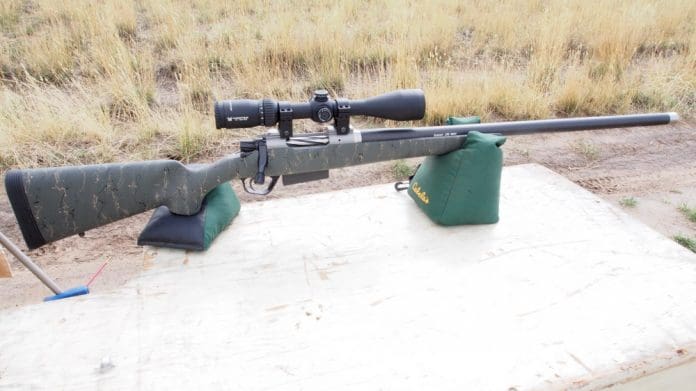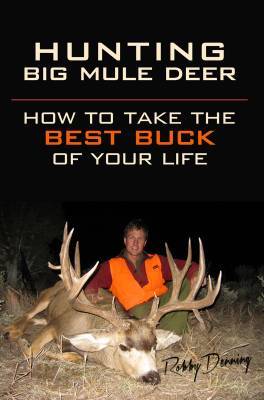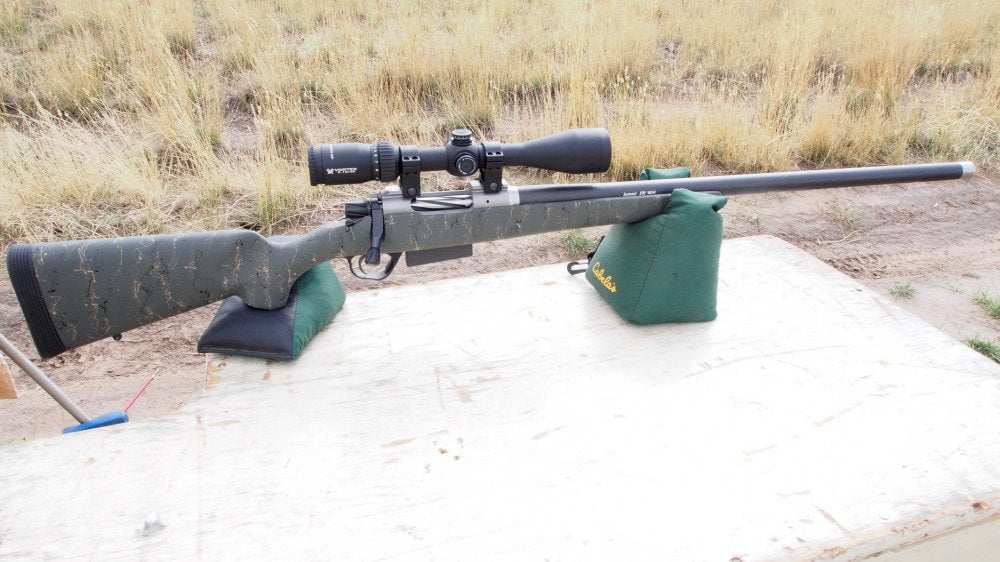
My last two posts were dedicated to why…
I switched to the 270 WSM from my old favorite, the 7mm Remington Magnum to build the ideal backcountry mule deer (or sheep) rifle. Not everyone agrees and that is just dandy- this is AMERICA! However, I’m very comfortable with my decision. So before we dive into my upcoming semi-live hunt for big mule deer to be posted day-by-day right here (be sure to “Subscribe to blog” upper right under Fitness/Other) let’s talk about the rifle (and scope/mounts) that I chose for this caliber and hunt.
First a big disclaimer: If you are thoroughly disgusted with high-end expensive rifles, then please click off this page now- I’ll only piss you off and promote angry comments which really none of us have the time and energy for right now. If your budget allows a rifle/scope package that goes north of 5-grand, then stick around- you’ll be glad you did.
If you’ve been a with me for a while, you probably noticed that banner ad in the upper right corner from Christensen Arms (CA). They came on as a Rokslide sponsor in spring 2015. We worked out a deal together to build a great backcountry rifle for mule deer. At the top of my list were ultralight weight, accuracy, dependability, and enough performance to kill big nasty mule deer at all reasonable yardages I’ve encountered in the backcountry. Finally, I didn’t want to have to use a muzzle brake to achieve killing performance (see why HERE)
I put a ton of thought in it and settled on the CA Summit Carbon Rifle in 270 WSM weighing in at 6 lbs, 2 ozs- butt-naked.
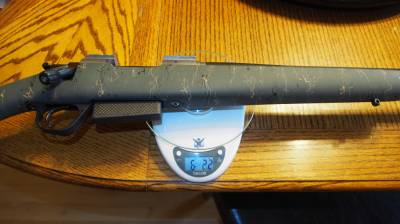
Depending on the scope I chose, I calculated this gun would tip the scale between 7 and 7.25 lbs. I’ve carried a bunch of rifles in the backcountry over the decades up to 10.5 lbs (way too heavy for this deer hunter regardless of the performance it might provide) with my good ol’ Weatherby as my latest (read more about that gun in a post I wrote three years ago HERE– even then I was contemplating the 270 WSM ) that tipped the scale at 7 lbs 14 ozs, scoped. In the early 2000s, that was really light for a non-custom build under $1500 and that gun served me really well for a decade. However, with CA being a leader in weight-reducing Carbon Barrel Technology and now Titanium components, I knew the next generation of non-custom ultralight rifles had arrived. Giddy as my first prom-night, I placed my order in late May.
While I waited for the gun, I started researching scopes. While I’ve shot Leupold for decades, based on Vortex’s solid reputation in optics AND customer service, I reached out to our long-time Rokslide sponsor. Mark Boardman- head of marketing at Vortex- and I had a long discussion on what I’d need in a scope for this project. Because the CA Summit was saving me nearly 10 ounces over my old Weatherby, I decided to step up in scope weight just a bit to enjoy a bigger objective and consequent light transmission (I’d been shooting a Leupold 2.5-8 x 32 mm at 11.5 ounces for years). We chose the Diamondback HP 3-12x42mm with the Vortex BDC Reticle, tipping the scales at around 18 ounces. While this would eat up some of my weight savings, I thought it was a good choice.
Next was scope rings. I’d always shot lightweight Tallys and wasn’t planning on anything else. That was until I found out that the CA Summit’s split Picatinny rail wouldn’t match up with any lightweight rings offered by Tally. I grudgingly ordered their steel rings in low and tall height to ensure enough bolt/scope clearance. I was eating up my weight savings in the CA faster than I liked.
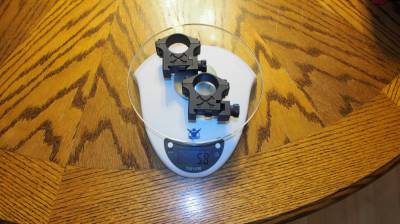
The Tally steel rings were hitting almost 6 ounces and ate further into my weight savings.
While I waited for the scope rings to arrive, one of the engineers at CA mentioned a ring company they’d had good experiences with: Precision Reflex Inc. (PRI) out of Ohio. They’ve been building high quality rings for 30 years! I’d never heard of them so I called Tony Holdren at PRI to see what they had. They offered the split Picatinny mounts in a lightweight alloy that would save me 1.5 ounces over the steel Tallys.
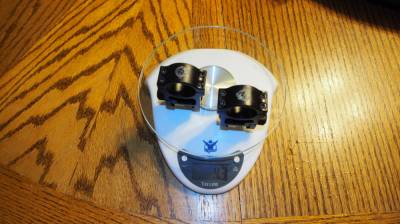
The Precision Reflex Inc tall mounts saved me 1.5 ounces over the Tallys
I ordered PRIs in both standard and tall height just so I had everything I’d possibly need. It was now early September and my gun still hadn’t arrived and there wasn’t much time for screwing around. With my own hunts already started and the guiding season looming, I was biting my nails. Looking at the calendar, I could only see a few days to actually put the gun/scope together, develop a load, and test my new Vortex BDC reticle system to 600 yards (my personal limit and plenty of distance to kill big mule deer).
The gun arrived September 15th and was soon laying on my kitchen table ready for the new scope and four different sets of mounts. The PRI standard heights came in under 4 ounces so I installed them first. There was not enough bolt clearance. I jumped to the PRI talls and while I had enough bolt clearance, once I tested my Butler Creek scope covers, I could barely get the bolt open without snagging the scope cover!, I tried the tall Tallys. With really no more scope clearance than the lighter weight PRI, I wasn’t going to take the 1.5 ounce weight penalty, so the tall PRI mounts it was. Hitting the scale, the gun/scope came in at 7 lbs, 7 ozs, five less than my Weatherby but higher than I’d calculated due to needing tall scope rings. I was nervous about the minimal scope clearance but the clock was ticking.
I already had three different loads ready sporting the 130 grain Berger Classic Hunter and wiith with light winds, I hit the range. I was very happy with the accuracy of the rifle. Even without a Lead Sled, (shoulder for me,) and using my old homemade portable wood bench, I found the slowest load- 63.5 grains of RL-19- easily produced sub-1″ 3-shot groups (with a concrete bench and a Lead Sled, I know I can cut that further.)
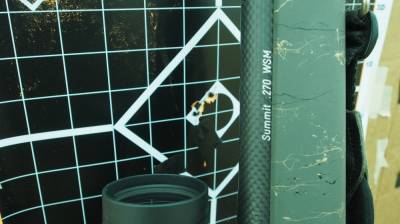
Just one of the sub-1″ groups the CA Summit produced shooting 130 grain Berger Classic Hunters
The Chrono showed an average of 3125 fps over four 3-shot groups. While a little slow for the 270 WSM (the R-22 was pushing them over 3300 fps but not under an inch group), I was out of time. I only had one more day to come back and test my hash marks to make sure they agreed with Vortex’s Long Range Ballistic Calculator. It was calculating a very flat trajectory and I needed to confirm if what my eyes were seeing was true: a 100 yard increase on my last hash mark vs. what my Weatherby in 7mm Mag had tested at. I headed home and in a rush reloaded a dozen rounds so I could shoot two-shot groups at 200, 300, 400, 500, and 600 yards. Why only two? I was running very low on RL-19 and hadn’t been able to find a drop anywhere in SE Idaho or the web for a month.
Read Part II if this series, HERE, See how the CA Summit Carbon Rifle’s trajectory performed before we all go hunting for big mule deer…
Make sure you “Subscribe to blog” so you don’t miss a post.
Read all about rifles, muzzleloaders, and bows for hunting big mule deer in my new book, Hunting Big Mule Deer, How to Take the Best Buck of Your Life














